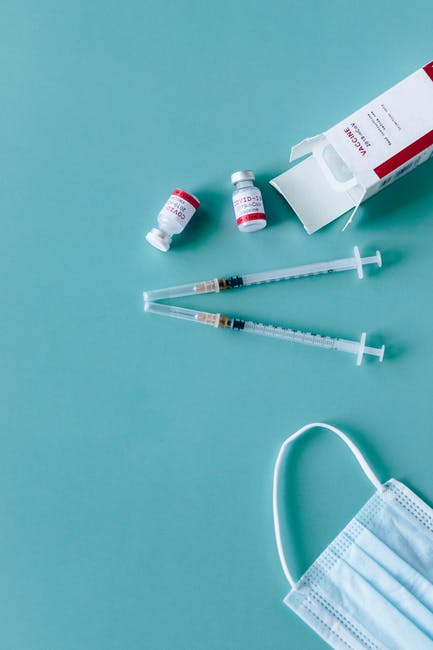8 Clever Medicine Tips You Never Knew About

Do you feel overwhelmed by all of your medications? Do you struggle to give medicine to your children or other young family members?
Medication is necessary for most people. Between regular temporary illnesses, pain relief after surgeries or injuries, chronic physical or mental health conditions, and more, more than 66 percent of all American adults take prescription medications.
We want to make taking, administering, and remembering your medications easier. Keep reading for some of our favorite medicine tips.
For Memory and Organization
These tips apply to both adult medications and child medications. They’re great for anyone who struggles to take their pills because they simply don’t remember them or can’t find them.
Missing a dose for most medications isn’t a big deal, but if you’re someone who takes contraceptives, mental health medications, or medications for serious diseases, you know that taking them every day can be the difference between a good day and a bad day.
Here are a few things that we do to remember and organize our meds.
1. Flip Your Caps
Do you have a hard time knowing if you’re repeating doses, or if you’ve taken your dose at all? Double doses are often a bigger deal than forgetting doses.
One of the simplest ways to make sure that you’re not missing a dose or doubling up is by flipping your cap.
While not all medication bottles allow for this, many that have child locks have an adult option as well. The top of the lid is narrower and it fits perfectly into the bottle.
By flipping your cap when you take your medication, you don’t have to guess.
2. Color Code
If you have too many medications in your cabinets it’s hard to see them all first thing in the morning or late at night. As these are the most common times that people take medications.
To have an easier time finding your medications and avoiding mistakes, use a highlighter or other transparent marker to color over your labels.
Pharmaceutical labels and pharmaceutical label inspection make sure that you don’t have any medication errors, so make sure that you don’t obscure the names of your medicines.
Consider making daily medications one color, “sometimes” medications another color, and dividing them into times of the day and people who are taking them.
3. Use Organizers
If using colors doesn’t seem right to you, buy or create your own cabinet or drawer organizers so it’s easy to grab what you need without scrambling around and looking at every bottle.
You can make organizers with cardboard, buy small baskets, or even use makeup holders.
While daily medication works in 7-day dividers, this process works regardless of whether you need a medication every day or whether it’s for certain occasions.
For Children
For a child, taking medicine is a confusing and unpleasant process. Adults are used to pills and bad-tasting liquid medication, but children are less likely to take their medication willingly.
Here are a few medicine hacks and tips for encouraging your child to take the medication that they need.
4. Make It Part of a Routine
Children thrive on routines. If you making taking their medication part of their standard routine, they’ll take to it more quickly.
If it’s a morning medication, make it part of their “getting up” process. When they’re used to waking up, eating their breakfast, taking their medication, and then brushing their teeth, it makes it easy for them to remember.
If it’s a bad-tasting medication they’ll also be happy to brush their teeth afterward. This is a bonus if you have a child who isn’t good at managing their dental hygiene.
5. Use a Reward System
Let’s face it: your child doesn’t want to take their medicine. It’s a necessary evil. To help combat this, use positive reinforcement by offering a reward.
You have to be careful with this. Explain to your child that they only get the reward if they take the normal dose so that they don’t try to take more to get more rewards.
If they need to take antibiotics, for example, tell them that they get their reward after the full course is finished. You can use things like snacks, stickers, or for longer-term medication, toys or activities.
6. Use Creative Vessels
While you need to measure your child’s medication in a cup or syringe, you don’t have to keep the medication there for your child to take it. Why not make it more fun for them?
This is one of our favorite child tips for taking liquid medicine. Take the dose and pour it into something like a teacup and have a little tea party. Make sure that you also give them tea (or other drinks that they like) after the medication.
You can also use things like fun spoons or doll cups.
7. Explain What You’re Doing
Many children resist medication because they don’t know what it’s for. They see it as a punishment rather than something that will help them.
If your child is old enough to understand that they’re ill or hurting, explain how the medication will help them. Tell them that you also take medication (and consider modeling it).
Children who understand why they’re doing something might be less resistant. They want to feel better too.
8. Let Them Play Pretend Doctor
Speaking of modeling, children learn through play. If your child is having trouble taking their medication, let them pretend to give doses to their dolls, stuffed animals, or action figures.
This might help them feel more comfortable with the process.
Use These Medicine Tips Today
No one enjoys taking their medication, but with these medicine tips, it gets a bit easier and less unpleasant for adults and children alike. Stay healthy and comfortable without the hassle of finding, remembering, and struggling to administer medication.
For more articles like this, visit the rest of our site.



